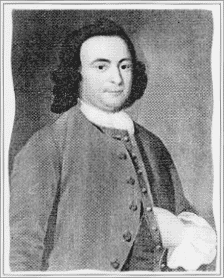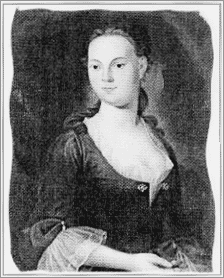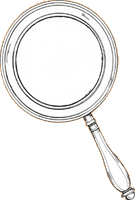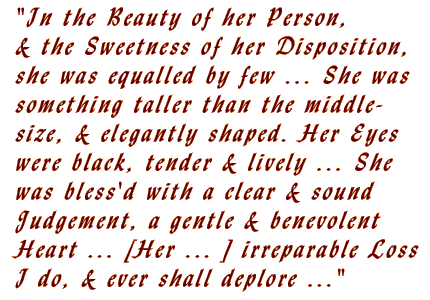READ AND DISCUSS
To learn about George Mason or any person who lived long ago, you become a detective. You look for information, or clues, in different places. Then, you put the clues together and try to make sense of them. In the 1700s, doing this would make you a detecter. (The word detective didn't exist.)
You can start your detecter work on Mason by seeing what the encyclopedia says about him or by reading a biography. But a good detecter also would look at the things George Mason left behind. This is like going back in time!
ACTIVITY
(in small groups)
What can a family Bible and a pair of portraits tell us about George Mason? Be good detecters and answer the questions on each of these objects.
A. George Mason's Family Bible
Mason wrote a history of his family inside the family Bible. The history included this description of his first wife, Ann Eilbeck Mason. Since the page was torn in places, we had to guess about the letters in [ ]'s.
1. Circle the words in the passage that are new to you. Look up these words in the dictionary.
2. Rewrite the passage in modern language. Go sentence by sentence.
3. Mr. Mason wrote this description of Ann after her death. How do we know this from reading the passage?
4. Why do you think Mr. Mason wrote his family history in the Bible?
5. The " ..." you see in the passage is called an ellipsis. Why is an ellipsis used here?
B. George and Ann Mason's Portraits (below)
About the time of their marriage in 1750, George and Ann Mason had their portraits painted by John Hesselius of Annapolis, Maryland. Over 60 years later, their son John took the paintings to D.W. Boudet, a portrait painter. Mr. Boudet made three copies of each painting. One set was for John and the other two sets were for other family members. Sometime after the copies were painted, the original portraits became ruined. It's good that the copies were made -- or we wouldn't have any pictures of George and Ann Mason!
 
1. Look carefully at the portraits. Describe each person (clothes; appearance; character, or personality).
2. In the 1700s, getting your portrait painted was expensive. Why do you think Mr. Mason spent the money to get this done?
3. John Mason called the portraits by D.W. Boudet "close and accurate copies." Can we believe John? Why or why not?
4. According to John Mason, these words were written on the back of the original portraits: "J. Hesselius pinxt. 1750." Who do you think wrote this? What does "1750" mean? The word "pinxt" is an abbreviation for a word in Latin. Can you figure out what it means?
 |




